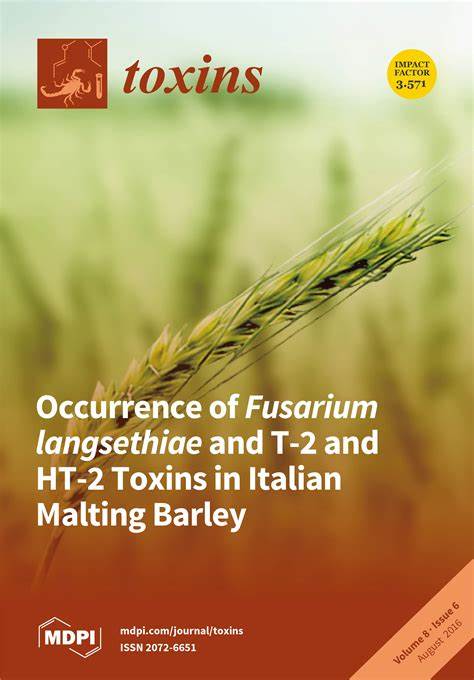芽孢杆菌和梭状芽孢杆菌二元毒素输送系统的结构和功能透视
IF 3.9
3区 医学
Q2 FOOD SCIENCE & TECHNOLOGY
引用次数: 0
摘要
致病性芽孢杆菌和梭状芽孢杆菌(即梭状芽孢杆菌和梭状芽孢杆菌)表达多种效应蛋白,以促进疾病的发生。这包括产生二元毒素,进入宿主上皮细胞,严重损害昆虫、动物和人类的肠道。特别是,二元毒素会形成一个 AB 型复合物,由一个具有毒性的催化亚基(A)和一个低聚细胞结合和输送亚基(B)组成,当 A 被输送到宿主细胞的细胞质中时,它会催化 ADP-核糖基化肌动蛋白,并迅速诱导宿主细胞死亡。本综述将讨论苏云金芽孢杆菌、难辨梭状芽孢杆菌和产气荚膜梭状芽孢杆菌所表达的二元毒素,重点是它们各自的 B 亚基的结构阐释,以及这些发现如何帮助解密这些致命细菌如何将有毒酶输送到目标宿主细胞。本文章由计算机程序翻译,如有差异,请以英文原文为准。
Structural and Functional Insights into the Delivery Systems of Bacillus and Clostridial Binary Toxins
Pathogenic Bacillus and clostridial (i.e., Clostridium and Clostridioides) bacteria express a diverse repertoire of effector proteins to promote disease. This includes production of binary toxins, which enter host epithelial cells and seriously damage the intestinal tracts of insects, animals, and humans. In particular, binary toxins form an AB-type complex composed of a catalytic subunit that is toxic (A) and an oligomeric cell-binding and delivery subunit (B), where upon delivery of A into the cytoplasm of the host cell it catalytically ADP-ribosylates actin and rapidly induces host cell death. In this review, binary toxins expressed by Bacillus thuringiensis, Clostridioides difficile, and Clostridium perfringens will be discussed, with particular focus placed upon the structural elucidations of their respective B subunits and how these findings help to deconvolute how toxic enzyme delivery into target host cells is achieved by these deadly bacteria.
求助全文
通过发布文献求助,成功后即可免费获取论文全文。
去求助
来源期刊

Toxins
TOXICOLOGY-
CiteScore
7.50
自引率
16.70%
发文量
765
审稿时长
16.24 days
期刊介绍:
Toxins (ISSN 2072-6651) is an international, peer-reviewed open access journal which provides an advanced forum for studies related to toxins and toxinology. It publishes reviews, regular research papers and short communications. Our aim is to encourage scientists to publish their experimental and theoretical results in as much detail as possible. There is no restriction on the length of the papers. The full experimental details must be provided so that the results can be reproduced.
 求助内容:
求助内容: 应助结果提醒方式:
应助结果提醒方式:


